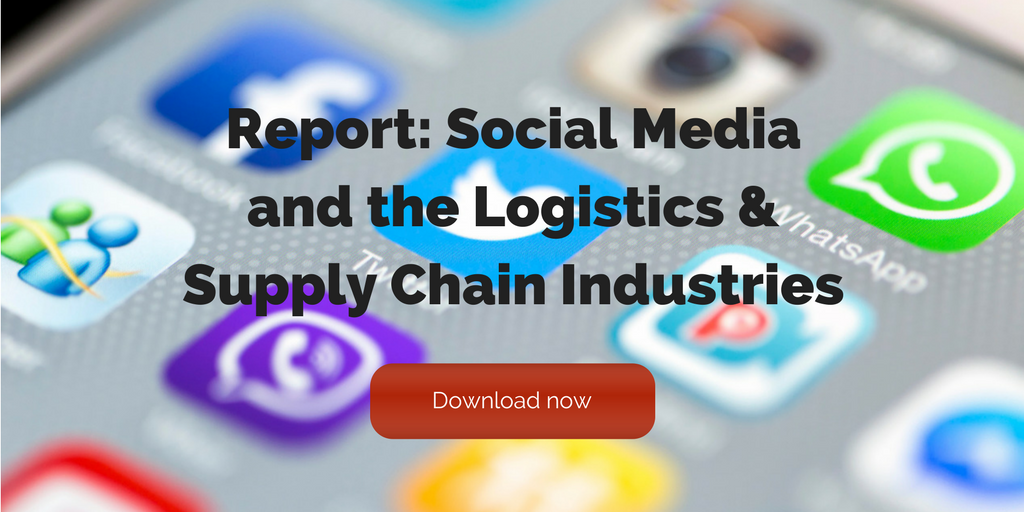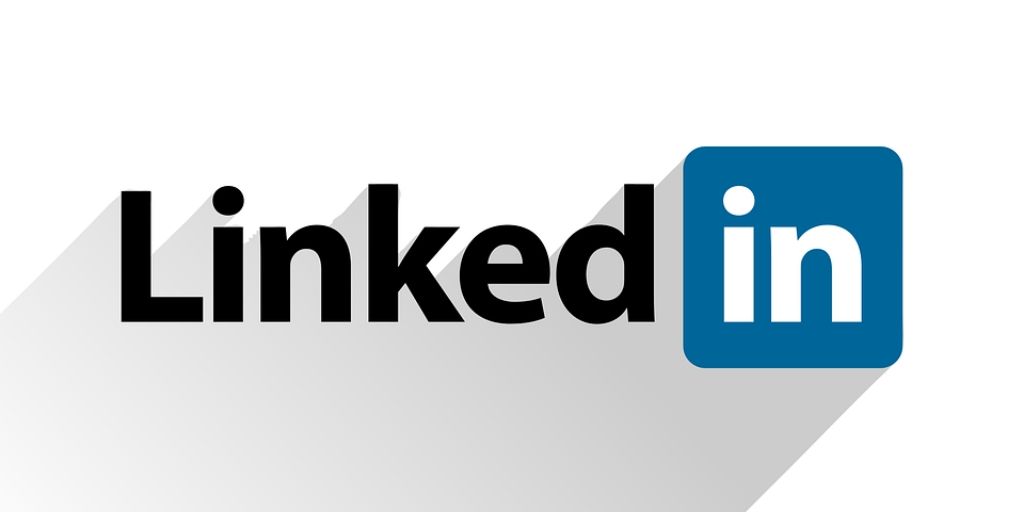
by Fronetics | Nov 5, 2019 | Blog, Content Marketing, Logistics, Marketing, Social Media, Supply Chain
LinkedIn has released a new guide to using video on its platform. Here’s what supply chain companies need to know to get the most out of video on LinkedIn.
Highlights:
- Effective B2B marketing videos start with an analysis of your prospects’ unique purchasing journey and needs.
- Videos for the awareness stage of the buyer’s journey should be concise and geared to forging an emotional connection.
- Bottom-of-the-funnel video types include product demonstrations, welcome videos, webinars, and FAQ sessions.
Visual content, particularly video, is the future of social media marketing. And video on LinkedIn is no exception. A recent report from Kleiner Perkins indicates that 62% of B2B marketers rate video as an effective content-marketing tactic. Not only that, but, according to internal data from LinkedIn, users are 20 times more likely to share a video on the platform than any other type of content.
Thanks to a recent guide published by the platform, leveraging video on LinkedIn for the supply chain has never been more attainable. The Tech Marketer’s Guide to B2B Video is an invaluable resource. Whether you’re relatively new to B2B video marketing, or a seasoned video creator, the guide contains useful nuggets of information, as well as examples of effective video on LinkedIn, for marketers at any stage.
We’ve pulled out key points for you.
6 steps to approaching video on LinkedIn
It’s worth pointing out that the six steps that LinkedIn identifies to building an effective video strategy are applicable elsewhere as well. Your strategy for video on LinkedIn should likely also apply to your strategy for video content across your digital assets.
1) Analyze your buyer’s journey
Consider the unique buyer’s journey for your company. What content do prospects want to see at each stage, and what actions do you want them to take?
2) Set your marketing strategy
What medium is optimal for delivering content at each stage? Which stages are particularly conducive to video content?
3) Establish metrics and KPIs
Choosing the right key performance indicators (KPIs) and metrics will allow you to determine how your content is performing.
4) Create video content
At the stages where video content is the best way to deliver, what type of video is most effective?
5) Target your content
Use your understanding of your target audiences, in combination with the targeting capabilities of LinkedIn, to ensure that your video is reaching the right people at the right times.
6) Optimize your campaign
Keep track of your data. Note what’s working. Adjust what isn’t performing.
Using video on LinkedIn throughout the buyer’s journey
Awareness
The first stage of the buyer’s journey, the awareness stage, is particularly opportune for video on LinkedIn. At this point, your goal is to tell a story, evoke a response, and introduce your brand and products.
Videos at this stage should be concise and geared to connecting with your audience, demonstrating an understanding of their challenges, and how your company is positioned to address those challenges.
LinkedIn’s guide points out a major advantage of video: its measurability. As opposed to text-based marketing, where your knowledge of audience behavior is limited to downloads and time on page, video on LinkedIn comes with richer data. You can tell, for example, when someone has watched your video and when they stopped. This means you can adjust your video length suit the preferences of your audience.
At the awareness stage, important video metrics include how many times your video was viewed, how much of the video was watched, and how many viewers responded to your call to action.
Consideration
Using video on LinkedIn for the second stage of the buyer’s journey, the consideration stage, is about introducing your products and their features, as well as giving a sense of what it’s like to work with your business. Ideal video formats at this stage include explainers, case studies, webinars, how-to videos, and virtual tours. Your foremost goal is to be authentic and to represent your business and the solutions it offers.
Key metrics at this stage are about engagement. Keep track of the number of interactions your videos get (comments, likes, clicks, shares, etc.), compared to the number of views. Also keep an eye on your estimated cost per view (eCPV) to track the efficacy of your video budget.
Decision
Because the decision phase of the buyer’s journey is all about personalization, video has traditionally been used less here. But that’s starting to change. Authentic, trust-building videos can be a powerful asset for the decision stage, reassuring your prospects that they’re making the right decision, using testimonials from existing customers. Welcome videos, FAQ sessions, and webinars are also effective in the decision phase, as well as full-length product demonstrations.
If you’re using lead-generation forms with your video on LinkedIn, keep track of which generate the most leads, as well as the quality of those leads. Otherwise, track click-through rates to gain insights into your estimated cost per click (eCPC).
Metrics for video on LinkedIn
LinkedIn offers a robust set of metrics for videos on its platforms:
- Views: At least one second of playback while the video is at least 50% on screen on desktop, or 300 milliseconds on mobile
- Views at 25%: The number of times your video was watched at 25% of its length, including watches that skipped to this point
- Views at 50%: The number of times your video was watched at 50% of its length, including watches that skipped to this point
- Views at 75%: The number of times your video was watched at 75% of its length, including watches that skipped to this point
- Completions: The number of times your video was watched at 97-100% of its length, including watches that skipped to this point
- Completion Rate: Completions divided by views as a percentage
- View Rate: Number of views divided by impressions, multiplied by 100
- eCPV: Estimated cost per view
- Full Screen Plays: Total number of clicks to view video in full screen
Do you use video on LinkedIn for your business? Let us know your experience in the comments.
Related posts:


by Jennifer Hart Yim | Sep 25, 2019 | Blog, Leadership, Strategy, Supply Chain, Talent
New research shows Gen X business leaders are being promoted slower than their millennial and boomer counterparts. This Gen X talent looking to jump ship.
This guest post comes to us from Argentus Supply Chain Recruiting, a boutique recruitment firm specializing in Supply Chain Management and Procurement.
Much attention has been given to millennial employees over the years –what attracts them, what causes them to stay in a role, how to manage them differently than other generations of employees. It was a hot topic of discussion at the recent SCMA National Conference. At the same time, more baby boomers are beginning to retire. These two generations represent the back and front end of the Supply Chain industry’s talent pipeline, and they’ve been the industry’s focus. But of course, the demographic picture is broader and more nuanced than just these two generations.
Last week, we wrote an article about the importance of the emerging Generation Z – people born between 1997 or so and the 2010s – to companies seeking to win the war for Supply Chain talent. Hopefully, it helped fill in the generational picture even further.
Now a recent, very interesting article in Harvard Business Review has us wondering – are Gen X employees being forgotten by the industry? If so, what’s the impact on their careers, as well as organizations who employ them – the companies who stand to lose if dissatisfied Gen X’ers begin to jump ship?
At the risk of explaining the obvious, Gen X’ers are generally defined as being born between the mid-1960s and early 1980s – after baby boomers, but before millennials. They also came of age with a reputation for being “unambitious” – a reputation that’s just as outdated as some of the most famous slacker movies (classic though those movies may be).
As we said with our article about Gen Z, these generational distinctions are a bit fraught. Career motivations are different for every person. They’re too complex to paint everyone with the same brush. But when you can marshal enough data, you can start to learn some interesting high-level things about the hopes, dreams, and discontents of a particular demographic. In 2018, HBR worked with EY and The Conference Board to collect and analyze data from some 25,000 business leaders. Those surveyed were from all over the business landscape, but there’s data here that will be useful for Supply Chain organizations looking in the mirror.
Some of the results related to Gen X in the workplace were very interesting, in particular:
- The majority of Gen X leaders (66%) had either not been promoted in the past 5 years, or had only been promoted once.
- Baby Boomer and Millennial leaders were more likely to receive promotions (58% and 52% respectively). This is unsurprising for the boomer generation, but it is surprising that a generation younger than Gen X seems to be getting promoted more. It suggests Gen X employees are being “skipped” compared to their counterparts.
- The data found that Gen X employees are promoted typically 20%-30% slower than millennials are.
- Generally speaking, Gen X managers have more direct reports than millennial managers at the same level, indicating a higher workload.
This is the situation on the ground for Gen X talent and leaders. But how are they responding to this lack of advancement?
Gen X employees tend to be more loyal to their current employers, with 37% contemplating leaving their current role compared to 42% for millennials. They came of age before the 2008 financial crisis, in a time before the rise of the gig economy, which might account for their willingness to spend longer in a role.
But companies shouldn’t mistake this loyalty for complacency: according to the data, only 58% of Gen X employees feel that their careers are advancing at a good rate, which is significantly lower than the 65% of millennials who feel the same way. Almost one in five Gen X leaders surveyed reported an increased desire to leave their current role (18%).
Many organizations are beginning to reckon with the retirement of the baby boomer generation. They’re trying to attract and retain millennial talent by improving opportunities for career growth. Maybe they should also be doing more to nurture Gen X talent, to avoid losing that all-important middle group within the talent landscape.
As Stephanie Neal, the HBR writer puts it, a significant number of Gen X’ers might be reaching a “breaking point in” their careers. But she identified some key strategies for companies to avoid neglecting Gen X talent:
- Invest not only in continuing education for employees, but personalize it. Most Gen X employees have developed a broad base of skills, but individual needs and desires vary. Organizations should tailor their talent development to each person. Stay interviews, which we’ve written about recently, are a good strategy to better understand what motivates each individual in your organization.
- Give Gen X leaders opportunity for mentorship, and not just within the organization. We also recently wrote about the power of mentorship in a Supply Chain career, so we were happy to see HBR highlight the importance of mentorship as well. According to the research, a majority of Gen X leaders craved mentorship outside their organizations, which is enabled by things like industry conferences and professional groups. Investment in these opportunities not only helps with retaining Gen X leaders, it also offers chances to expand your supplier network or find new business.
- Hire and promote based on data, rather than gut feelings. Hiring managers often work hard to try to eliminate unconscious bias from the hiring process, but ageism often goes under the radar. Applying stereotypes to a certain cohort introduces bias that harms your process and leads to dissatisfaction. Neal uses the example of assuming that a millennial would be better at a digital marketing role than a Gen X employee. Decisions based on data such as assessments and quantifiable achievements will always be more successful than those based on stereotypes.
It’s a good start, but maybe this is issue deserves an even closer look. If we may add another tip: avoid stereotypes. Data surveying the preferences and mindsets of a large group of people can be instructive, but don’t assume that every Gen X employee is wired the same way.
What do you think? Are there any specific talent retention strategies for individuals in the Gen X cohort? Are you of this generation, and if so, how do you feel about your career prospects? We’d love to hear from you.
Related posts:
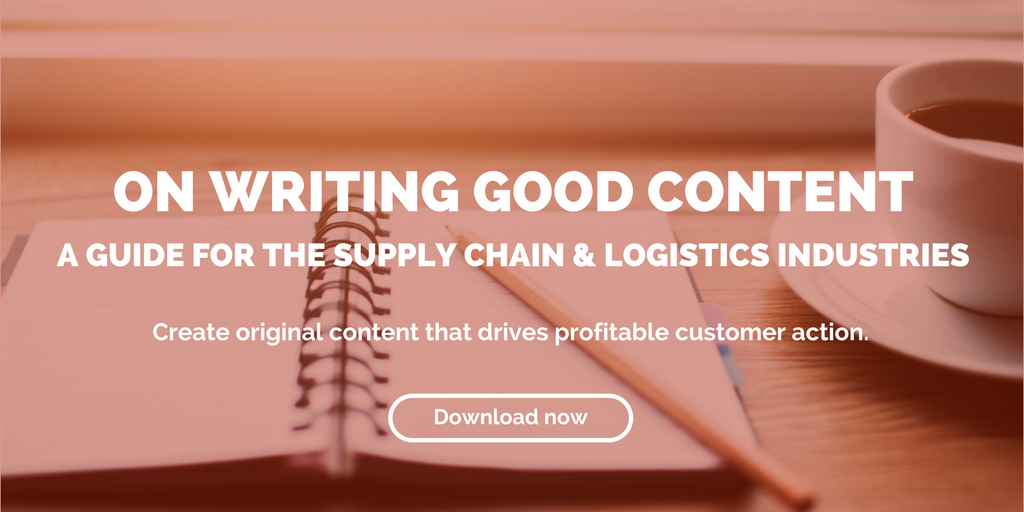

by Fronetics | Sep 17, 2019 | Big Data, Blog, Data/Analytics, Internet of Things, Robotics & Automation, Supply Chain
Machine learning is shaping the future of supply chain and logistics management, improving accuracy, speed, scale, and more. Here’s how.
Highlights:
- Machine learning refers to an application of artificial intelligence that lets systems learn and improve automatically based on experience.
- Experts predict that 95% of supply chain planning vendors will rely on supervised and unsupervised machine learning for their solutions by 2020.
- When paired with the Internet of Things, machine learning can provide cost savings around $6 million per year.
When it comes to the future of the supply chain, machine learning is one of the most exciting applications of artificial intelligence (AI) technology out there today. Machine learning is a mode of data analysis that provides systems with the ability to learn and improve automatically from experience, without being specifically programmed.
Gartner recently projected that by 2020, 95% of supply chain planning vendors will rely on supervised and unsupervised machine learning for their solutions. Furthermore, it isn’t just expert predictions that demonstrate the impact and potential of machine learning for the supply chain. Amazon, for example, is using machine learning to improve accuracy, speed, and scale for its Kiva robotics, and DHL relies on machine learning to power its Predictive Network Management system.
So, what is it about machine learning that makes it ideally suited to meet the challenges commonly faced by supply chain companies? The answer lies in the fact that machine learning algorithms are brilliant at detecting patterns, anomalies, and predictive insights. This makes it the ideal technology to help supply chain companies forecast error rates, reduce costs, improve demand planning productivity, and increase on-time shipments.
Here’s how these remarkable technologies are already revolutionizing supply chain management.
7 ways machine learning is improving supply chain management
1) Logistic solutions
Particularly when it comes to resource scheduling systems, machine learning algorithms are driving the next generation of logistics technologies. An April 2019 report from McKinsey predicts that “machine learning’s most significant contributions will be in providing supply chain operators with more significant insights into how supply chain performance can be improved, anticipating anomalies in logistics costs and performance before they occur.”
2) Internet of Things
The Internet of Things (IoT)’s sensors, intelligent transport systems, and traffic data generate a tremendous variation in data sets. Machine learning has the potential to deliver increased value by analyzing these data sets, thereby optimizing logistics and ensuring that materials arrive timely.
Additionally, machine learning can reduce logistics costs by uncovering patterns in track-and-trace data captured through IoT-enabled sensors. A December 2018 study by Boston Consulting Group determined that pairing machine learning (specifically Blockchain) with the IoT can contribute to cost savings of $6 million per year.
3) Preventing privileged credential abuse
A recent article in Forbes points to privileged credential abuse as “the leading cause of security breaches across global supply chains.” Machine learning can prevent these abuses by verifying the identity of anyone requesting access, as well as the context of the request and, most importantly, the risk associated with the access environment.
4) Reducing fraud potential
In addition to reducing risk and improving product and process quality, machine learning can reduce the potential for fraud in the supply chain. For example, machine learning startup Inspectorio is a solution to the problems “that a lack of inspection and supply chain visibility creates, focusing on how they can solve them immediately for brands and retailers.” Their algorithm provides insights that instantaneously reduce the risk of fraud.
5) Reducing forecast errors
According to a recent report from Digital/McKinsey, “Lost sales due to products not being available are being reduced up to 65% through the use of machine learning-based planning and optimization techniques.” The same report observes that “inventory reductions of 20 to 50% are being achieved today when machine learning-based supply chain management systems are used.”
6) Detecting inconsistent supplier quality levels
Machine learning can help manufacturers combat one of the biggest problems they face today, namely a lack of consistent quality and delivery performance from suppliers. These technologies can quickly detect and address errors, as well as determine highest and lowest performing suppliers.
7) Preventative maintenance
Preventative maintenance is a tremendous strategic asset for the supply chain. And, when paired with machine learning, it “allows for better prediction and avoidance of machine failure by combining data from the advanced IoT sensors and maintenance logs as well as external sources,” according to the same Digital/McKinsey study mentioned above. Not only that, “asset productivity increases of up to 20% are possible, and overall maintenance costs may be reduced by up to 10%.”
The bottom line: machine learning is reinventing supply chain management
Not only has machine learning already realized tremendous value for the supply chain, but the very nature of this technology means that the possibilities are virtually endless. Algorithms continue to become more sophisticated, and, as new challenges arise, machine learning grows and evolves to meet them.
Related posts:

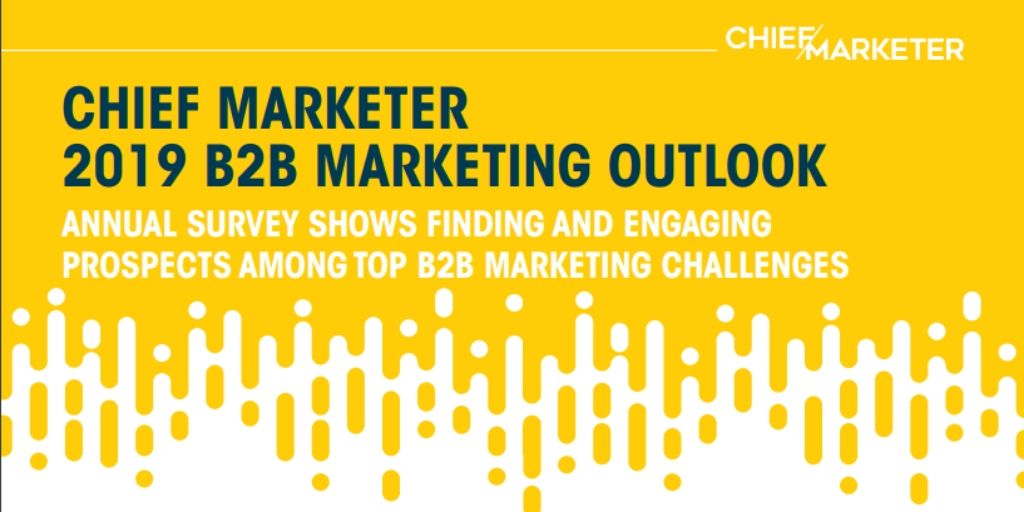
by Fronetics | Sep 4, 2019 | Blog, Content Marketing, Marketing, Strategy
The biggest challenges for B2B marketing, according to a recent report? Finding leads that convert and engaging the right target audience.
Highlights:
- Measuring social media ROI is a challenge for 58% of respondents, and 39% report that proving ROI is the biggest hurdle to securing C-suite buy-in.
- Only 23% of brands have a dedicated social media team.
- 60% of marketers report content marketing is their most valuable technique for lead nurturing.
Chief Marketer’s 2019 B2B Marketing Outlook report is out, and it’s full of revealing statistics for B2B marketers industry-wide. The survey studied 209 B2B marketers in more than 20 verticals, getting a bird’s eye view of biggest challenges and trends in B2B marketing.
Here are the top 10 stats you need to be aware of.
10 B2B marketing stats from Chief Marketer’s 2019 report
1) For 58% of respondents, measuring ROI is the top challenge surrounding social media marketing.
Measuring social media ROI is notoriously difficult, though certainly not impossible. For well over half of the survey respondents, it proved the greatest challenge when it comes to social media.
65% of respondents reported engagement as one of their biggest social media challenge, while 45% cited the challenge of having enough content. Adequate bandwidth to respond to social followers and post frequently and inadequate social budget (24% each) were lower on the list of social concerns.
2) Only 23% of brands have a dedicated social media team.
We’ve written before about how social media management is a herculean task that falls all-to-often to an overworked marketing team. Chief Marketing’s survey found that, for a vast majority of B2B brands (75%), their marketing team is in charge of maintaining social media presence.
Even as social media is becoming increasingly effective at ushering leads through the sales funnel, only 23% of brands surveyed have invested in a dedicated social media team, while 15% are outsourcing their social media management.
3) Articles/blog posts and reviews/customer testimonials are tied as the two most effective types of content for moving prospects through the sales funnel.
45% of respondents reported that articles and blog posts, as well as reviews and customer testimonials, are the most effective content types for moving prospects through the sales funnel.
Following closely behind, 32% reported whitepapers and 31% reported video as most effective. Partner content, at 26%, came next, while social media is gaining efficacy, coming in at 22%.
Respondents reported that for all content types, the visual aspects were key. For Informa Engage, for example, more visual content is performing well, says Tricia Syed, Vice President for Marketing Strategy and Execution. “In some markets, traditional whitepapers and webinars are still hugely popular, but we’re getting more visual with e-books [to illustrate] data.”
4) 39% of survey respondents reported being unable to prove ROI to C-suite as the biggest obstacle for getting approval for marketing expenditures.
Just as proving social media ROI is a poses a challenge for B2B marketing, proving overall content marketing ROI to win C-suite buy-in can be equally daunting. 39% reported it as the biggest hurdle to getting marketing expenditures approved.
46% of respondents cited the challenge of budgets that are focused elsewhere, while 33% reported that executives still don’t understand the need for marketing expenditures.
5) For 60% of respondents, content marketing is the most valuable technique for lead nurturing.
Content marketing is reported by 60% of marketers as their most valuable technique for lead nurturing. Email marketing led the pack at 62%, while in-person marketing took a close third place at 57%. When it comes to lead nurturing for B2B marketing, social media was relatively low on the list, reported by only 20% of respondents as their most valuable technique.
6) Only 22% of respondents have an in-house editorial team dedicated to content creation.
While content marketing is overwhelmingly reported by marketers as being a highly effective technique for generating, nurturing, and converting leads, relatively few brands have chosen to invest in a dedicated in-house editorial team for content creation. Instead, a whopping 80% of marketers are charged with creating their own content.
“That’s a surprising disconnect,” says James Furbush, B2B marketing manager of Lord Hobo Brewing. “I’m not surprised marketing teams are creating content, but if you’re going to be that focused on content marketing, having an editorial team is an important investment.”
Perhaps even more surprisingly, only 23% of respondents are taking advantage of the opportunity to outsource content creation, an excellent alternative for companies who are unable to afford a dedicated in-house team.
7) 42% say that their organizations will increase martech budgets in 2019.
Martech, or the fusion of marketing and technology, is taking over B2B marketing. 42% of survey respondents reported that their martech budgets will be increasing in 2019, while 40% said that existing martech budgets will remain the same. Only 4% reported that they anticipate a decrease in martech budget.
When asked what types of martech they plan on investing in, 45% of respondents pointed to marketing automation, 43% to video, 40% to email, 38% to customer experience, and 37% to social media management.
Interestingly, despite all the discussion surrounding AI, only 9% of businesses surveyed report that they are considering investing in these technologies.
8) When it comes to generating new leads, 55% reported that finding leads that convert is their biggest challenge.
More than half of survey respondents pointed to the challenge of finding leads that ultimately convert as the greatest obstacle to generating new leads. 57% reported that their biggest challenge is getting targeted prospects to engage with their brands.
What’s interesting about these numbers is that, while marketers are reporting these issues as lead-generation obstacles, they are simultaneously pointing to content marketing as their most effective tool for lead nurturing and conversion.
9) For 44% of respondents, email is a top source of B2B leads.
When it comes to which channels are the largest sources of B2B leads, email leads the pack, with 44% of respondents putting it first. Online searches came in at a close second at 43%, and live events came in at 41%.
A respectable 36% of respondents cited content marketing as a top source of B2B leads, while 22% pointed to social media.
Knowing where leads are coming from is only part of the picture. Perhaps unsurprisingly, the channel that produced the leads with the highest ROI was email for just under half (49%) of survey respondents.
10) 56% say cost of conversion is the metric that matters most in marketing attribution.
When asked which metrics matter most in marketing attribution, cost of conversion topped the list at 56%, followed closely by amount of time to convert at 53%. Other important metrics included channel (34%), first click (29%), and last click (22%).
“At the end of the day, the most important takeaway when setting up campaign attribution is to think about your goal,” said one respondent. “Start with the end in mind, reverse engineer your marketing campaign, and set up ‘mile markers’ along the way to track trends in your prospects’ digital footprints.”
Related posts:

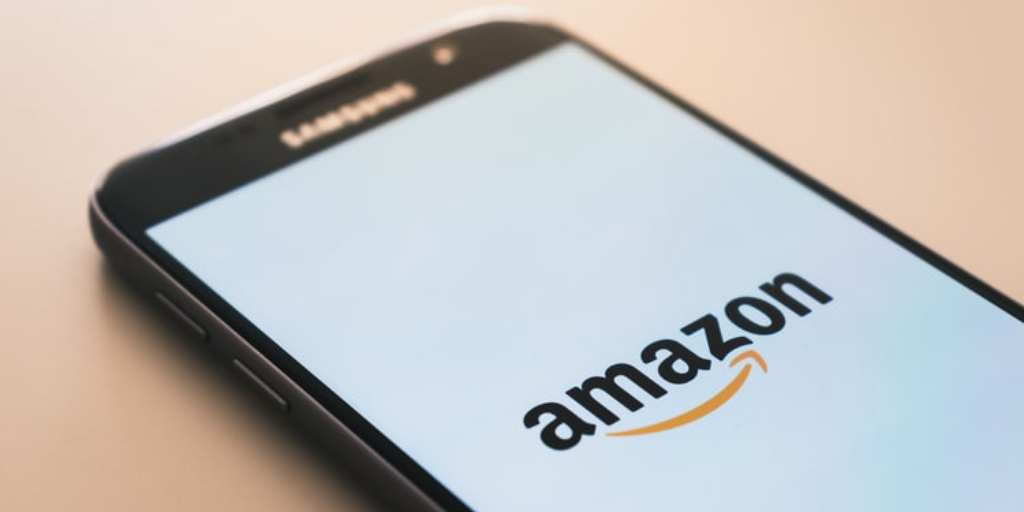
by Fronetics | Jul 17, 2019 | Blog, Content Marketing, Current Events, Logistics, Marketing, Supply Chain
Here are four ways the Amazon effect is shaking up supply chain trends – and why it’s a net positive for the industry.
Highlights:
- More companies will start to tap into the gig economy in the last mile, and Uber-style delivery companies will emerge.
- To meet growing customer demand, same-day delivery will become increasingly standard.
- Supply chain leaders will be increasingly evaluated according to customer experience.
Here’s the thing about adversity: it has a tendency to test our strength, and, more often than not, it brings out the best in us. There’s no doubt that the meteoric ascendency of Amazon has created plenty of adversity for the retail, transportation, and supply chain industries. But as the corporation continues to shake up supply chain trends, it’s actually giving the industry an opportunity to sharpen and refine its practices.
Amazon’s dominance has already influenced supply chain trends in big ways. Industry-wide, companies have been compelled to reflect how they do business. In many cases, it’s been a painful process: businesses have had to reinvent, in everything from what and how processes are implemented to the choice of new technologies to purchase. But despite the difficulty, the reinvention process has the potential to pay big dividends in the long term.
Experts are predicting that there are four major ways in which Amazon will continue disrupting supply chain trends going forward.
4 ways Amazon will keep disrupting supply chain trends
1) Uber-style delivery companies
If you think e-commerce sales are high, you haven’t seen anything yet. Recent data from Statista predicts that e-commerce sales will grow as much as 25% by 2022, meaning that retail delivery will undergo analogous growth. As postal service prices rise, FedEx and UPS will likely need to make more deliveries themselves. Meanwhile, Amazon’s 3PL business is booming, putting pressure on the competition.
While these retail delivery services have not yet tapped into the gig economy, largely thanks to opposition from labor unions, it’s only a matter of time according to Convey CEO Rob Taylor. Taylor predicts that a deal will be “brokered between unions and 1099 labor, following in the footsteps of Uber and the taxi and public transportation industries’ unionization efforts.”
2) Same-day delivery
Same-day delivery, once a novelty, is increasingly a subject of consumer demand. PwC’s Global Consumer Insights Survey 2019 found that 40% of online shoppers are willing to pay extra for same-day delivery. To meet the demand retailers are investing in on-demand warehousing and other solutions for increasing localized inventory.
In addition, there’s the rise of drone delivery. Back in 2017, McKinsey estimated that the value of drone activity would reach $1 billion. More recent estimates, including one from ResearchandMarkets, set the value at $11.2 billion by 2022. It’s not long before same-day delivery will be necessary for businesses to compete.
3) Customer satisfaction metrics
As supply chain trends go, the type of metrics used to evaluate personnel may not seem particularly revolutionary. In fact, this type of shift is an indicator of sweeping cultural change. Writing for Fortune, Elementum CEO Nader Mikhail predicts that “tomorrow’s CEOs will come from an unlikely place: the supply chain.”
Customer expectations have been redefined, thanks to the Amazon effect, and businesses need leaders who are skilled at transforming overarching goals into many smaller variables. Where better to find such skills than among the ranks of supply chain leaders?
As a result, in addition to more traditional supply chain key performance indicators (KPIs), Taylor predicts that “net promoter score (NPS) and customer satisfaction (CSAT), which are leading indicators of customer happiness and loyalty, will play a greater role in the supply chain scorecard.” Essentially, supply chain and marketing goals will increasingly intersect.
4) Artificial Intelligence
Artificial Intelligence (AI) is among the most widely discussed supply chain trends in recent years. AI is helping supply chain leaders collate and analyze operational data, and “automating the ability to predict customer demand, forecast product availability, optimize routes for delivery, and better target and personalize communication with customers,” according to Taylor.
Amazon has invested heavily in AI technologies including order optimization, blockchain, warehouse robotics, and the Internet of Things. To keep up, Taylor predicts that “a new generation of supply chain leaders will likely require skills in AI that empower them to translate this highly technical information into business decisions and profitability.”
Navigating the Amazon effect on supply chain trends
When it comes to managing Amazon’s disruptive effects on supply chain trends, the industry will do best to look on them as opportunities. Amazon’s success is, according to Taylor, “pushing brands to modernize and align their teams around the central goal of improving customer experience.” The bottom line is that thanks to Amazon, supply chain companies need to be primarily focused on the customer in order to compete.
Related posts:
